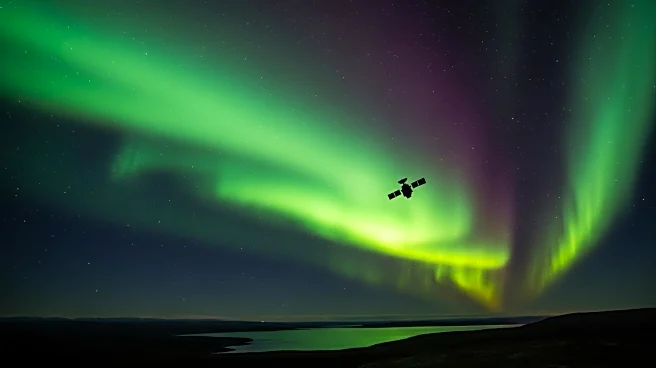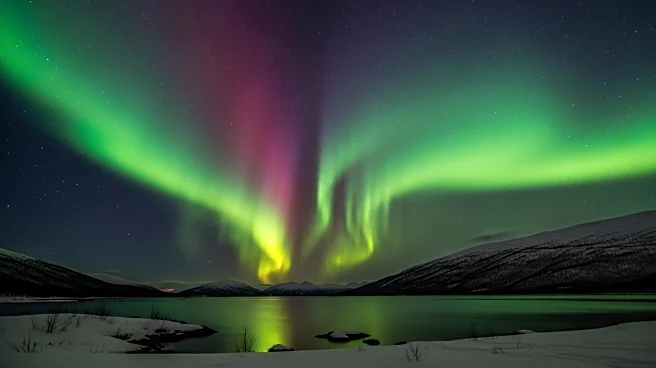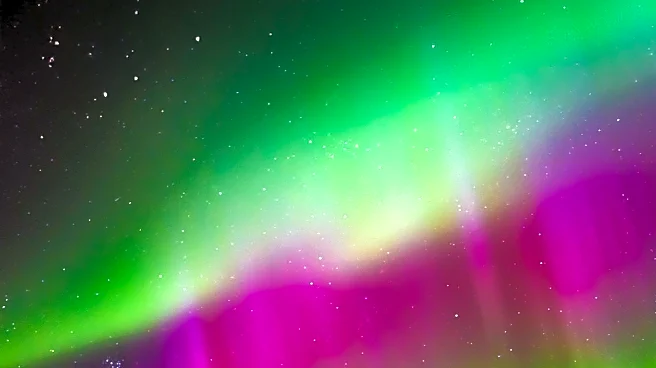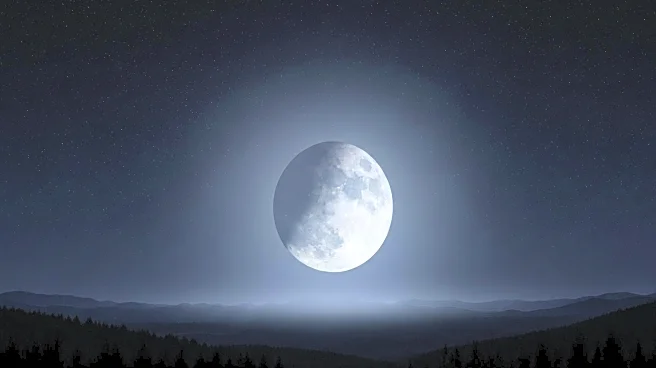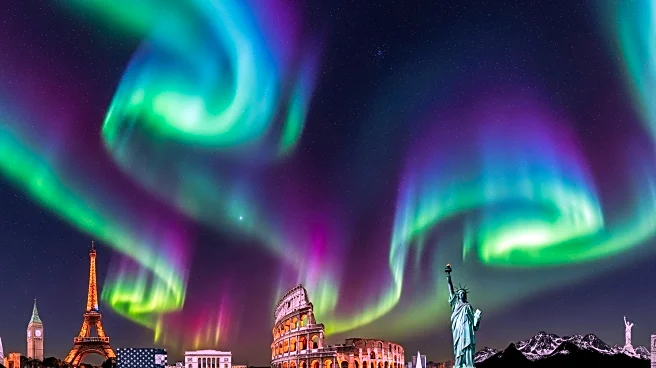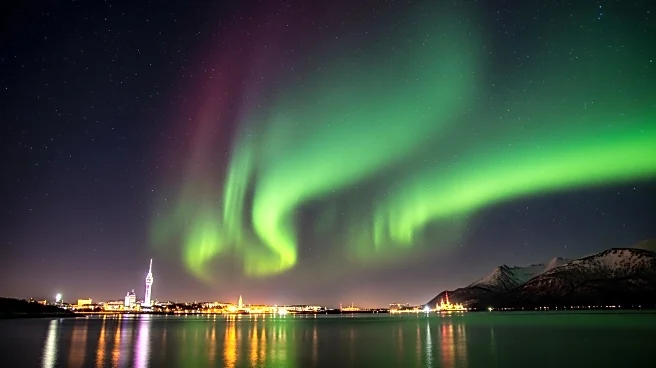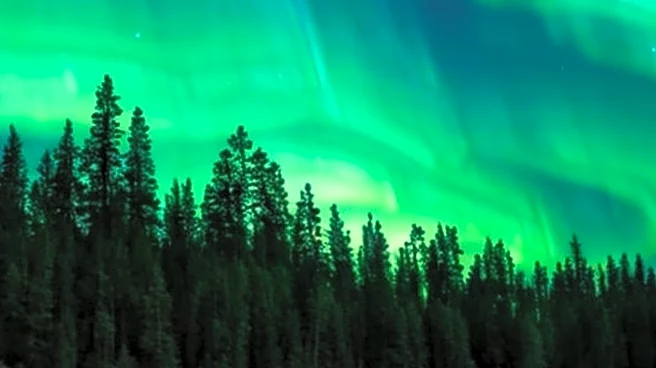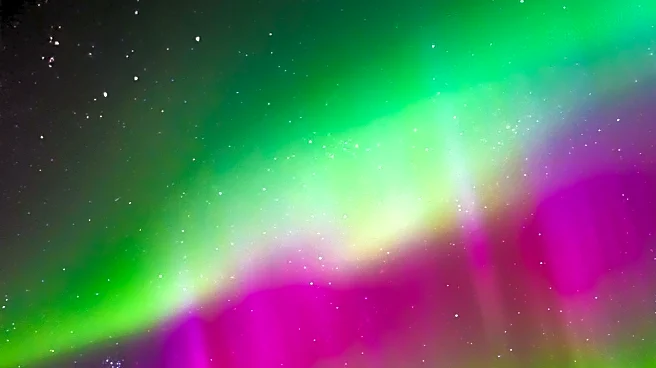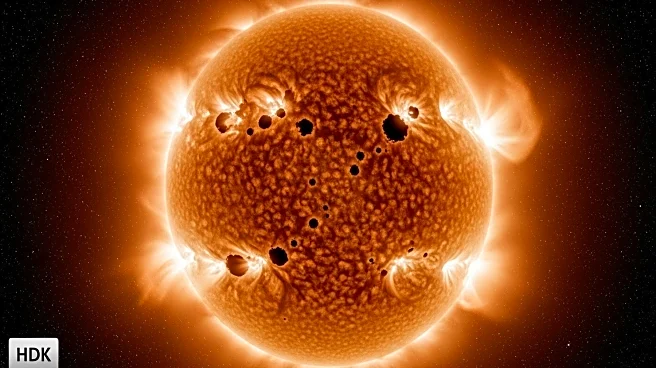What's Happening?
A cannibal solar storm impacted Earth's magnetic field on September 1, 2025, resulting in a geomagnetic storm that illuminated skies across Europe and North America. The storm reached G2 levels, as reported by the U.K. Met Office and NOAA's Space Weather Prediction Center. Despite forecasts suggesting potential for stronger activity, the storm's north-south magnetic orientation limited its intensity. Nonetheless, skywatchers in regions such as northern Europe, Canada, and parts of the northern United States witnessed vibrant auroras. The phenomenon, known as a 'cannibal CME,' occurs when one coronal mass ejection overtakes another, creating a complex disturbance in the solar wind.
Why It's Important?
The occurrence of such solar storms highlights the dynamic nature of space weather and its potential impact on Earth. Geomagnetic storms can affect satellite operations, power grids, and communication systems, posing challenges for technology-dependent societies. The visibility of auroras in populated areas offers a rare opportunity for public engagement with space phenomena, fostering interest in astronomy and science. Additionally, understanding and predicting solar storms is crucial for mitigating risks to infrastructure and ensuring the reliability of technological systems.
What's Next?
Future monitoring and forecasting of solar activity remain essential to anticipate similar events. Agencies like NOAA and the U.K. Met Office will continue to refine their predictive models to better understand the conditions leading to geomagnetic storms. Increased collaboration between international space weather organizations may enhance global preparedness for potential disruptions. Public interest in auroras may drive educational initiatives and community events centered around space weather phenomena.
Beyond the Headlines
The cultural significance of auroras, often associated with folklore and mythology, adds a layer of intrigue to their scientific study. As climate change alters atmospheric conditions, the visibility and frequency of auroras may shift, prompting further research into their long-term patterns. Ethical considerations arise in balancing public fascination with auroras against the need to address potential technological vulnerabilities caused by solar storms.
